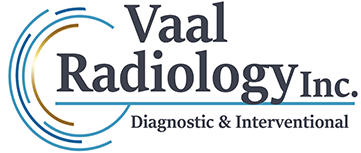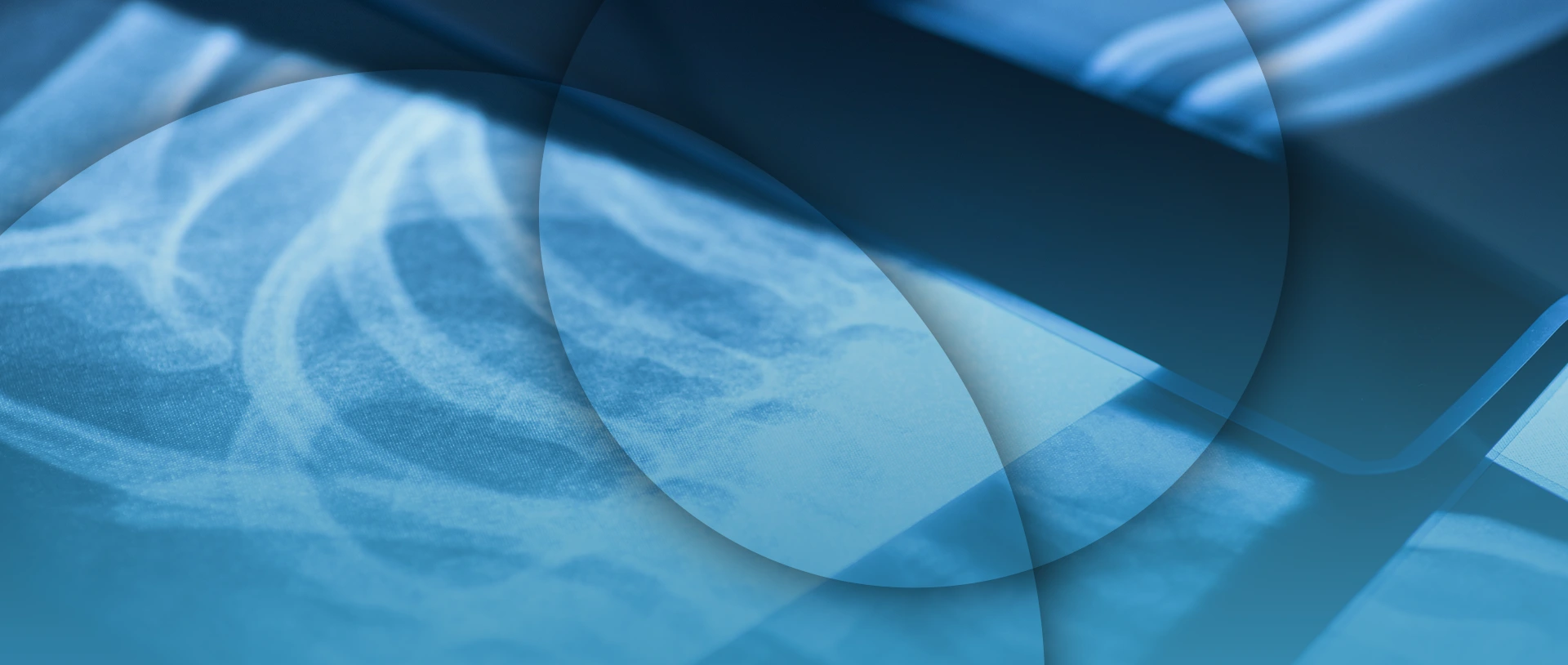
What is diagnostic and interventional radiology?
Interventional radiology (IR) is a medical subspecialty that performs various minimally invasive procedures using medical imaging guidance, such as X-ray fluoroscopy, computed tomography (CT), magnetic resonance imaging (MRI) or ultrasound.
IR performs both diagnostic and therapeutic procedures through very small incisions or body orifices.
Diagnostic IR procedures are those intended to help make a diagnosis or guide further medical treatment and include image-guided biopsy of a tumour or injection of an imaging contrast agent into a hollow structure, such as a blood vessel or a duct. By contrast, therapeutic IR procedures provide direct treatment. They include catheter based medicine delivery, medical device placement (example stents) and angioplasty of narrowed structures.
The main benefit of Interventional Radiology techniques are that they can reach the deep structures of the body through a body orifice or tiny incision using small needles and wires. It ensures decreased risks, reduced pain, and improved recovery times compared to open procedures. Real-time visualisation also allows precision guidance to the abnormality, making the procedure or diagnosis more accurate.
These benefits are weighed against the additional risks of lack of immediate access to internal structures (should bleeding or a perforation occur) and the risks of radiation exposure such as cataracts and cancer.
What is the risk associated with having an X-ray examination?
Many activities can carry some kind of risk. To call something safe usually means that it carries a low risk, not zero risk. Zero risk is almost impossible.
Safety is different for everyone. For example, people with asthma do not tolerate pollution well. What may be safe for a person without asthma may not necessarily be safe for a person with asthma.
An action or product is deemed safe only if the risk associated with it is very low. This is true for medical X-rays, medication or any medicine for that matter. Notwithstanding this, only patients who are in need of diagnostic imaging should have imaging exams.
Background radiation exists naturally everywhere in the environment. These background levels of radiation are clearly safe. If they were not, life on Earth would not flourish. Yet, we know that radiation has the potential to cause cancer.
The degree of safety depends on the level of exposure. Ultra high levels of radiation (levels which are above background radiation or amounts well in excess of those required in diagnostic imaging) may cause cancer to develop later in life.
Only a small percentage of people who are heavily exposed to radiation develop radiation-induced cancer later in life. This includes people who are:
- Exposed to radiation from nuclear weapons.
- Involved in radiation accidents.
- Treated for an existing cancer with radiation treatment.
The potential for radiation induced cancer depends on the amount of radiation exposure and accumulation of exposure over a long time. Lower exposure levels (background radiation, nuclear medicine imaging, computed tomography scans, or diagnostic X-rays) carry low risks.
Nevertheless a large volume of indirect evidence suggests that diagnostic levels of radiation probably are associated with a low level of risk for inducing disease many years after exposure. Such an event would be very infrequent. Benefits to patients who are sick or injured are so substantial that the radiation risk becomes a minor factor in their healthcare.
Some imaging examinations are used to screen for disease in healthy people. Annual mammograms are able to detect breast cancer more early when the cancer is smaller and can be treated more successfully. Early diagnosis and treatment therefore far outweigh any radiation risk. By this definition, the examination is safe.
When used in larger quantities or when many examinations are performed, the risk from exposure to X-ray increases. In some instances, the accumulated dose from multiple examinations can reach levels where the risk of induced cancer has been identified. This can occur after certain types of imaging examinations are repeated 5 or 6 times in some adult patients. For some very serious medical conditions, multiple examinations are necessary, and the benefits outweigh the risks.
Safety is a priority. To be safe, medical practitioners should use X-rays only in quantities necessary for proper medical care. For example, X-rays for children are scaled down, and multiple examinations are limited to those that are essential. Since babies are small, diagnostic examinations can use far less radiation to obtain necessary pictures.
It is important to use diagnostic examination only when necessary. A necessary exam is safe.
Am I able to have an imaging examination if I think I am pregnant?
The possibility of an X-ray during pregnancy causing harm to your unborn child is very small. Generally, the benefits of the diagnostic information from an X-ray outweigh the potential risk to a baby. However, if you received a large number of abdominal X-rays over a short period before you were aware of your pregnancy, your baby could be affected.
Most X-ray exams, including those of the legs, head, teeth or chest would not expose your reproductive organs to the direct X-ray beam, and a lead apron can be worn to provide protection from radiation scatter.
The exception is abdominal X-rays, which exposes your belly and your baby to the direct X-ray beam. The risk of harm to your baby depends on your baby’s gestational age and the amount of radiation exposure. Exposure to extremely high-dose radiation in the first 2 weeks after conception might result in a miscarriage, an all or nothing effect. However these dosage levels are not used in diagnostic imaging.
Exposure to high-dose radiation 2-8 weeks after conception might increase the risk of foetal growth restriction or birth defects. Exposure between 8 and 16 weeks might increase the risk of a learning or intellectual disability. But the typical dose of a single radiation exposure associated with the diagnostic X-ray is much lower than the high-dose associated with these complications.
Before having an X-ray, inform your doctor if you are or might be pregnant. Depending on the circumstances, it might be possible to postpone the X-ray or modify it to reduce the amount of radiation. In addition, if you have a child who needs an X-ray, do not hold your child during the exam if you are or might be pregnant. If you had a diagnostic X-ray before you discovered that you were pregnant, talk to your healthcare provider.
Is it safe to have imaging if I am breast feeding?
Yes, it is perfectly safe for breast a feeding mom to get any kind of X-ray, including dental X-rays or even chest X-rays. The radiation in an X-ray may kill off a few of the living cells in any breast milk present at the time of the scan, but it would not expose your baby to radiation.
It is even safe to get a mammogram, although mammograms of lactating women can be harder to read.
It is also usually fine to be exposed to contrast dye which is sometimes injected before an imaging scan to help illuminate certain parts of the anatomy. It is safe because the dye is made up of molecules that are too large to pass into breast milk.
Magnetic resonance imaging (MRI) scans, which use magnets and no radiation, are also safe for a breast feeding mum.
If I am claustrophobic and having an MRI, what can I do?
Claustrophobia is characterised as a fear of dark or confined spaces but people also describe this as a fear of being trapped without a way to escape. Usually, there is a fear of suffocation or fear of restriction associated with this phobia as well.
Sometimes an MRI is unavoidable if you need answers to your medical condition, but the thought of lying in a tube for an extended amount of time can be daunting if you have claustrophobia. By being more informed of the specifics of the test and being more prepared, you are more likely to be less anxious. Closing your eyes during the examination may allow you to be more relaxed without visualising the confined space that you find yourself in. Focus on breathing by taking deep, calm breaths, so you can stop yourself from hyperventilating and prevent an anxiety attack. By having a blanket over you during the examination, it creates a sense of comfort and security and minimises the anxiety. If these measures do not alleviate the anxiety, a sedative may be prescribed by your doctor or radiologist to help with the situation. It will make you sleepy and some people will fall asleep for the duration of the MRI. If a sedative has been prescribed, ensure that a driver has been arranged to take you home.
How long does a CT scan take?
A CT scan can take anywhere from 10-30 minutes, depending on what part of the body is being scanned.
It also depends on how much of the body the doctor wants to look at and whether contrast dye is used.
It often takes more time to position you on the table and administer the contrast dye than to take the images.
After the test, you may be asked to wait for a while whilst the images are being checked to make sure that they are optimally acquired.
Can I have an MRI scan if I have a pacemaker?
It is generally safe to have an MRI if you have a pacemaker, but it is important to consult with your healthcare provider and the MRI facility to ensure proper precautions were taken. Some pacemakers are MRI compatible, whilst others are not. Your health care provider may need to adjust the pacemaker settings before the MRI to ensure its proper function.
Can I have an MRI with an existing metal prosthesis?
The safety of having an MRI with metal prostheses depends on the type of metal used in the prosthesis and the specific design. Many modern metal implants and prostheses are MRI safe, but some older or certain types of metal implants can pose a risk during an MRI.
It is essential to inform the MRI radiographer and your health care provider about any metal implants or prostheses before the procedure. They will be able to assess the safety of having an MRI and may take specific precautions or use alternative imaging techniques if necessary.


Thank you for considering Vaal Radiology for your diagnostic imaging needs. We look forward to serving you soon.




Available Doctors
Dr MPG Kitsa
Dr AB Mehtar
Dr VJ Radebe
Dr J Veldman
Midvaal Private Hospital
Tel: 016 430 4330
Nile Drive Three Rivers
Accounts
Tel: 016 430 4350/4357
Email: accounts@vaalrad.co.za
PO Box 838 Vereeniging 1930
Mediclinic Vereeniging
Tel: 016 430 4300
Cnr Joubert/Rhodes Ave Vereeniging
Dr MPG Kitsa
Dr AB Mehtar
Dr VJ Radebe
Dr J Veldman
Tel: 016 430 4330
Nile Drive Three Rivers
Tel: 016 430 4350/4357
Email: accounts@vaalrad.co.za
PO Box 838 Vereeniging 1930
Tel: 016 430 4300
Cnr Joubert/Rhodes Ave Vereeniging
Proudly designed by Bunnypants Graphic & Web Design Studio | 2024


